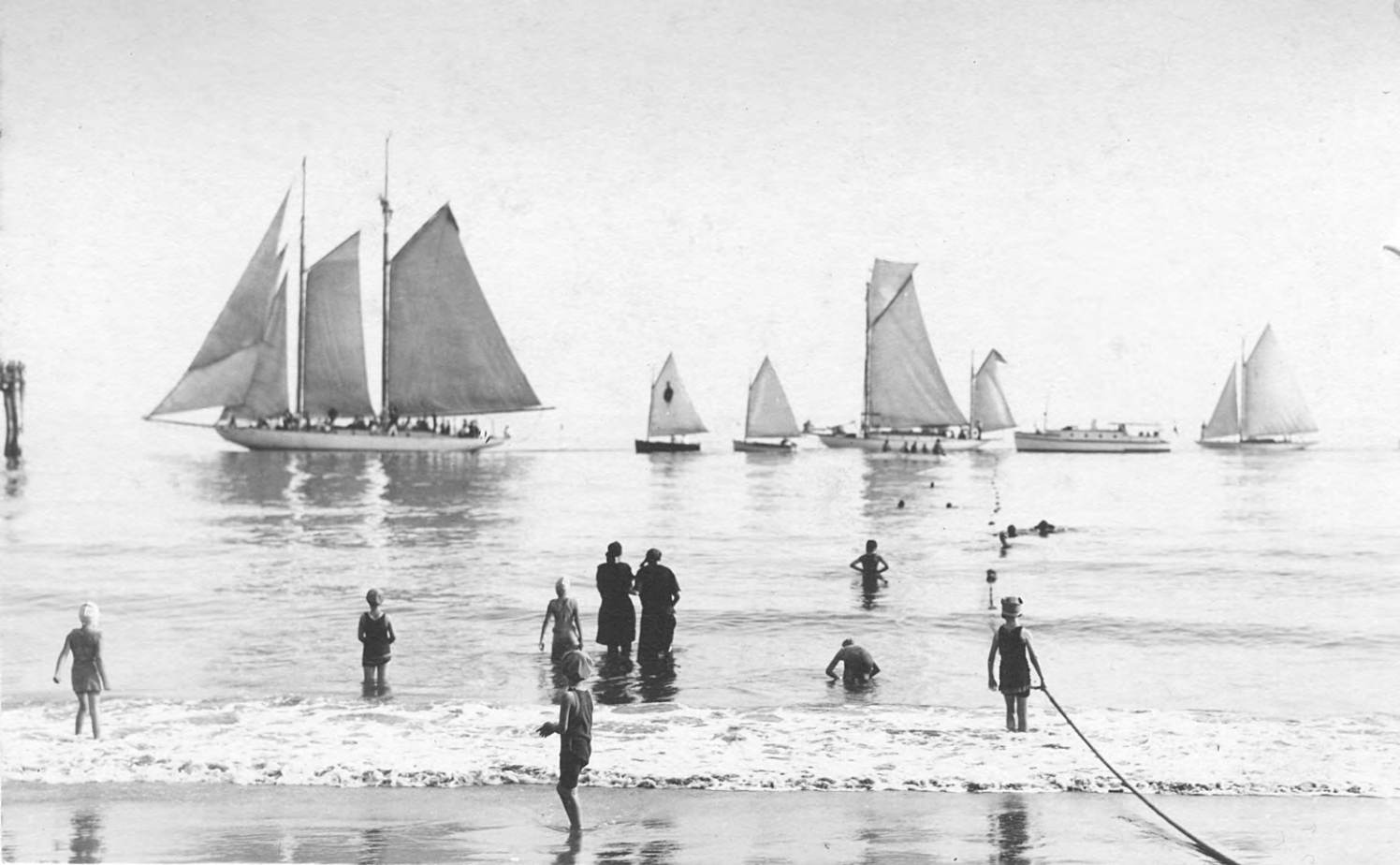Basic HTML Version



summer
|
fal l
53
“The chief interest in bird life here centers in the seabirds. A graceful
flock of curlews, in compact flight, circles over the water, lighting where –
through our glass – we can see them stalk on long legs at the water’s edge
and probe the wet sand with their sickle-shaped bills.
“Sanderlings and sandpipers, too, find a lunch counter on this
beach….the sanderlings – running swiftly, with a movement like that of
mechanical toys on the sidewalk – play their game of tag with the surf.”
Even in 1906, the tides were used to clean the beach. Jessie wrote,
“Daily, when the refuse from the hotel is dumped on the sand below the
high-water line, there gathers a motley crowd – hens and seagulls, pigeons
and turkey vultures – all feeding together. The hens and pigeons flee from
the incoming tide, but the gulls do not mind a food bath.”
View of Miramar Beach in 1927 across one of a succession of rafts which
was tied up off the beach for nearly 100 years (photo courtesy of Harold K.
Doulton Family)
Shifting Sands
The beach may be named for the hotel, but there were others who
owned beachfront property on Miramar Beach. Most notable was the
pioneer Fernald family that owned the point of land east of the hotel and
for whom the point is named. In 1899, Judge Fernald’s widow, Hannah,
commissioned her sons and two friends to take down an oil well that had
sprung up on the beach in front of her property. A mile or so east of the
Miramar, Summerland had become engulfed in oil derricks and piers,
and oil speculators were attempting to move westward. The Miramar
Guests once arrived at the Miramar Hotel by train and yacht; the
pier was a turning point for many races and regattas between
Stearns Wharf and the Miramar (photo courtesy of Harold K.
Doulton Family)

